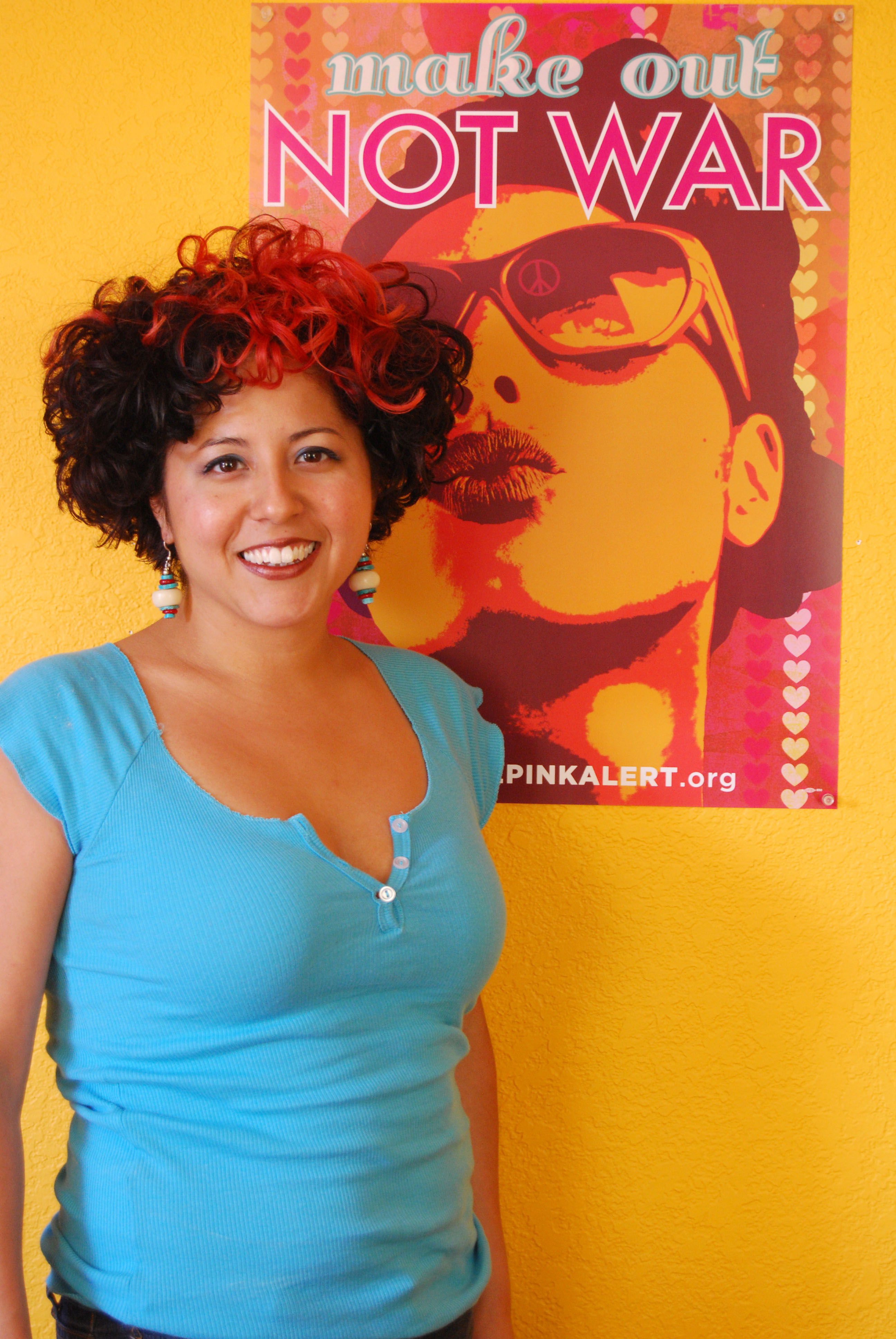Social change printmaker and media artist Favianna Rodriguez opened Toronto’s 24th annual Mayworks Festival of Working People and the Arts. Rodriguez’s exhibition Transformation/Agitation runs through June 6 at the Toronto Free Gallery, 1277 Bloor Street West.
Rodriguez uses high-contrast, warm colours and vivid figures in her composites for social justice campaigns. Most of her poster art has strong women of colour as the central protagonists. Her political graphics seek to empower especially women of colour by creating positive images of them. Growing up in America, she saw mainly white women on television as being beautiful. Her posters on sex positivity highlight women of colour and challenge homophobia and abstinence.
“Women of colour are very absent in mainstream, or the images that are seen are very monotonous and disempowering,” she says. “For example, Latino women are portrayed as working submissively in service sector as maids. My art aims to make Latino women three-dimensional people, to show them as having the power to be organizers and change-makers.”
Rodriguez’s posters depict women of colour as resisting and organizing on issues that link globalization with gender. Young women were being murdered in the free-trade zones of Juarez, Mexico, while officials ignored these cases. In her poster ‘feminicide has to stop’ for the campaign to stop violence against women, she focused on organizing.
Before she entered the campaign, most of the posters highlighted the victimhood of these women. In her posters, images of mothers of the disappeared women “taking to the streets and fighting for their daughters” are juxtaposed with images of labour on the U.S.-Mexico border to show how the issues intersect.
Based in Oakland, California, she has worked on poster and billboard campaigns tackling gentrification. She asks “what will happen to black west Oakland?” The poster remarks: gentrification = predatory development.
One of her posters deals with the inclusion of people of colour at the centre of the environmental movement: “green is not white.” The most toxic jobs are performed by immigrant workers, who also demand green collar jobs and green communities.
She says it is essential to work closely with groups and ask for tips on wording and slogans. She collaborated with immigrant rights groups to develop the primary message in her poster: “Legalization Now!” — words that resonate with Latinos who march in May Day parades in the U.S. demanding justice and dignity for all.
In 2008 Rodriguez was the co-editor of the book Reproduce and Revolt! with renowned stencil artist and art critic Josh MacPhee. The book contains hundreds of stock graphics from artists from around the world that activists can use royalty free.
The book also includes helpful essays on how to compose and message posters and a brief history of reproducible graphics, from Goya’s use of the printing press to Kathe Kollwitz’s wood etchings used in worker struggles and anti-war posters, and silkscreen used extensively in the 1968 student revolts.
More recently, ‘xerox’ art and now digital art provide a way for the average person to do art. The book mentions a host of website sources of copyleft political graphics that anyone can use for noncommercial purposes, such as Radical Graphics.
One of Rodriguez’s major inspirations is Rini Templeton — a selfless American artist well known across the U.S. and Central America for beautifying local movements with ‘xerox’ art. Favianna marvels at her process of organizing art for social change and her prolific output, producing hundreds of images for the image commons (see her graphics bank at http://www.riniart.org). Rini would “show up at marches, make art about the issues, and give the art away” to the local groups to easily use in flyers, banners and newsletters.
Templeton also conducted skills-building workshops on how activists can use ‘xerox’ art to help local movements, a practice Rodriguez also keenly engages in. She conducted two workshops for Mayworks while in Toronto and is co-founder of the East Side Arts Alliance, a program dedicated to training young artists in the tradition of muralism. Building institutions for people’s art is crucial, she says. “We need sustainable institutions so we don’t have to be consistently re-inventing the wheel.”
Favianna credits her own lifelong engagement with printmaking when she was an intern at 17 at the Center for the Study of Political Graphics in Los Angeles. The Centre holds one of the world’s largest archives of political posters and is highly accessible. “It was there that I learned about Rini Templeton, Carlos Cortez and other graphic artists and I decided to be a printmaker and media artist.”
Building on a long tradition in reproducible political graphics, she seeks to “really use visual art in our community organizing to build movements and mass change.”
Mayworks brings a range of artists to Toronto with live music, storytelling, spoken word, film, photography, dance, community theatre and more from April 25 to May 3. Full program available at www.mayworks.ca.



